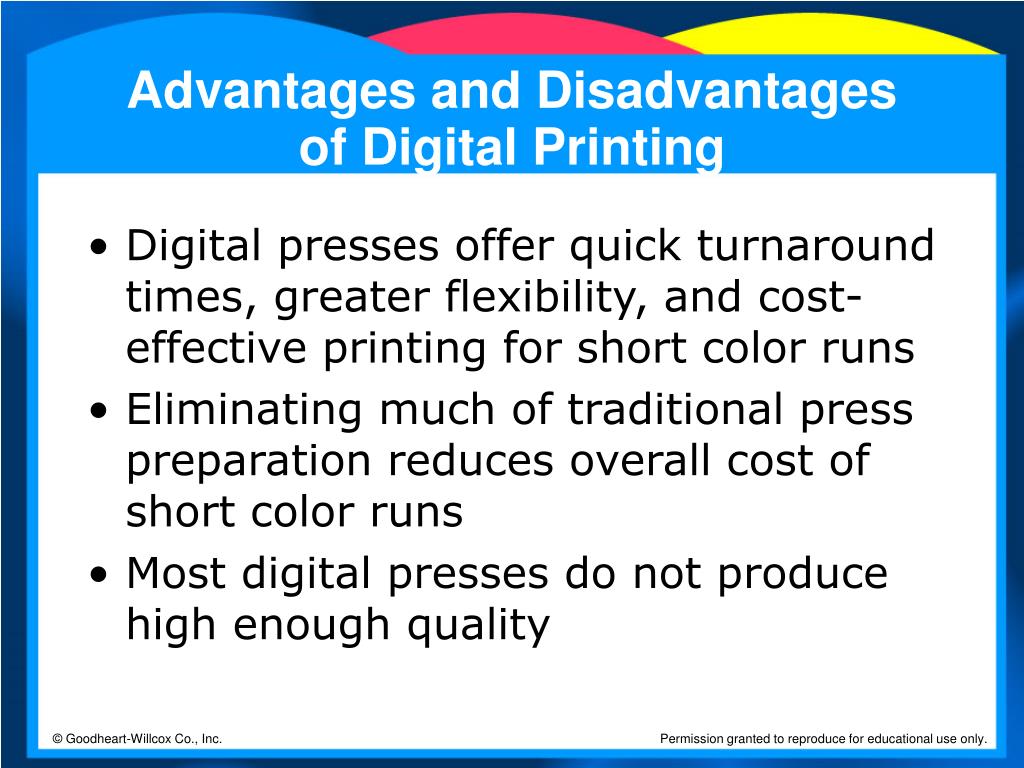The Facts About Digital Printing Uncovered
9 Easy Facts About Digital Printing Described
Table of ContentsAn Unbiased View of Digital PrintingTop Guidelines Of Digital Printing6 Easy Facts About Digital Printing ShownA Biased View of Digital PrintingSome Ideas on Digital Printing You Should KnowThe smart Trick of Digital Printing That Nobody is Talking About
Variable data printing, such as direct mail with personalized codes and addresses, is ideally matched for digital printing. Digital fast printing just needs four actions of style, review, printing and binding to get whatever done. Digital quick printing has an unmatched advantage: print on need.According to PMMI, electronic printing enables brand names and makers to respond promptly to consumer demands while enhancing the supply chain, minimizing warehousing expense and waste, and taking pleasure in faster time to market. That all audios great, however how does this technology do all that? The significant differentiator of these innovations is that there are no set-up charges and no plates with electronic printing.
Indicators on Digital Printing You Need To Know
According to Wikipedia, the biggest difference between electronic printing and conventional approaches such as lithography, flexography, gravure, or letterpress - Digital Printing is that there is no demand to replace printing plates in digital printing, whereas in these analog printing techniques home plates are continuously changed. This causes quicker turnaround time and lowers expense when using electronic printing.
Digital printing is very flexible, so it's easy to make adjustments to the plan style quickly. It all goes back to the plates.
With conventional printing methods, short-run printing is just not feasible. Due to the fact that a terrific design can make or break your item, electronic printing regularly creates top quality, clear and colorful graphics each time.
Digital printing is the procedure of printing digital-based pictures straight onto a range of media substratums. There is no need for a printing plate, unlike with offset printing. Digital files such as PDFs or desktop publishing documents can be sent out directly to the electronic printing machine to print theoretically, photo paper, canvas, fabric, synthetics, cardstock and various other substrates.
The Buzz on Digital Printing
According to PMMI, electronic printing allows brand names and makers to respond quickly to consumer needs while enhancing the supply chain, decreasing warehousing price and waste, and delighting in faster time to market. That all audios excellent, however exactly how does this modern technology do all that? The significant differentiator of these modern technologies is that there are no set up charges and no plates with digital printing.
According to Wikipedia, the best difference between digital printing and standard methods such as lithography, flexography, gravure, or letterpress is that there is no requirement to replace printing plates in electronic printing, whereas in these analog printing methods the plates are repetitively replaced. This results in read here quicker turnaround time and reduces expense when utilizing digital printing.

An Unbiased View of Digital Printing
With conventional printing methods, short-run printing is just not possible. Since a great style can make or damage your item, electronic printing constantly develops premium, additional reading clear and vibrant graphics each time.

According to PMMI, digital printing allows brands and suppliers to respond rapidly to client demands while enhancing the supply chain, decreasing warehousing expense and waste, and enjoying faster time to market. That all sounds terrific, yet how does this technology do all that? The major differentiator of these technologies is that there are no set-up fees and no plates with electronic printing.
Unknown Facts About Digital Printing
According to Wikipedia, the greatest distinction in between electronic printing and standard techniques such as lithography, flexography, gravure, or letterpress is that there is no need to change printing plates in electronic printing, whereas in these analog printing techniques the plates are consistently replaced. This causes quicker turn-around time and reduces cost when making use of digital printing.
Rapid production means obtaining your product to market faster. It likewise implies it's simpler and faster to make changes later, when you alter a recipe, include a SKU, or produce seasonal product packaging. Digital printing is extremely flexible, so it's easy to make adjustments to the bundle layout rapidly. All of it goes back to home plates.

3 Easy Facts About Digital Printing Described
Digital printing is the process of printing digital-based images directly onto a selection of media substratums. There is no need for a printing plate, unlike with balanced out printing. Digital files such as PDFs or desktop computer publishing data can be sent out straight to the digital printing machine to print theoretically, image paper, canvas, textile, synthetics, cardstock and various other substratums.